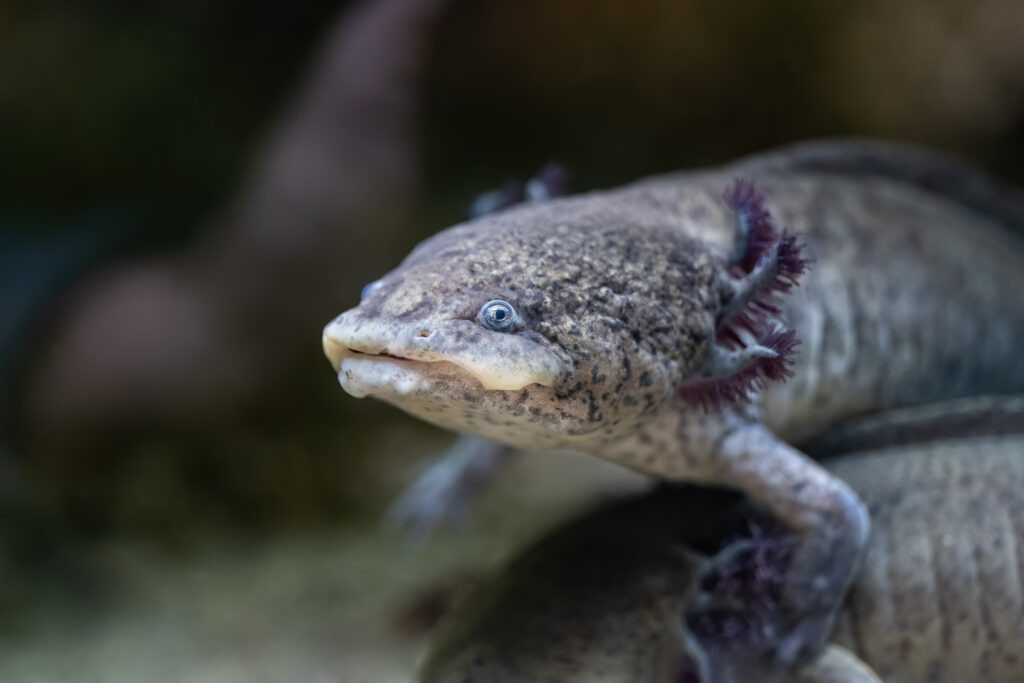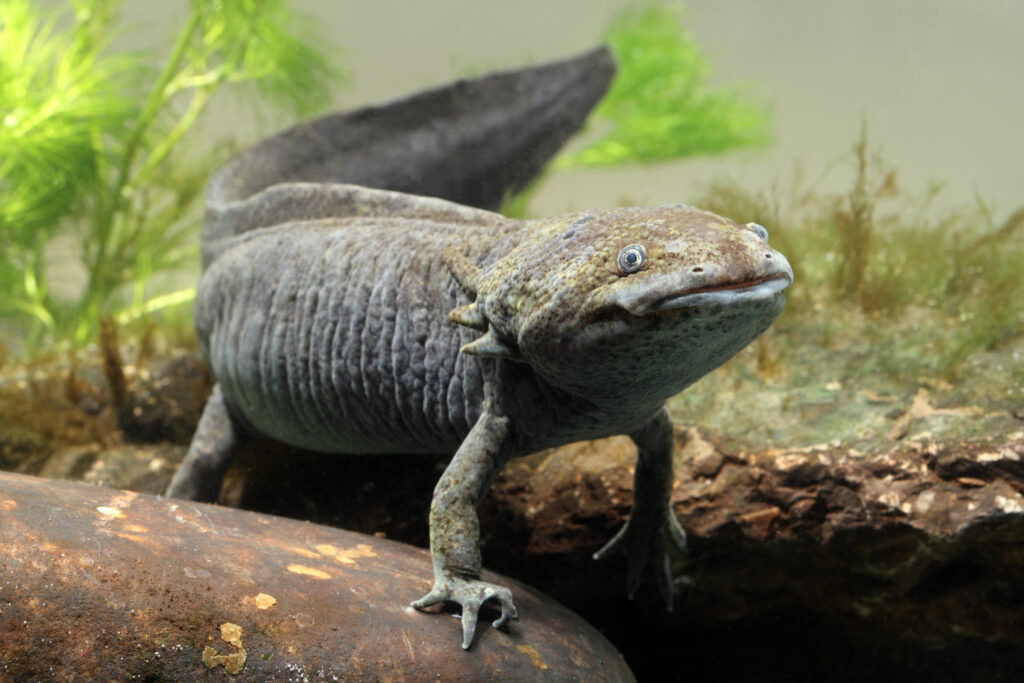We’re diving into the world of one of nature’s most captivating amphibians: the axolotl. Often dubbed the ‘walking fish’, this member of the salamander family is truly unique, and you’ll soon understand why this nickname is so fitting.
In this guide, we will explore the fascinating origins of the axolotl, pinpointing exactly where they are naturally found. We’ll also delve into their incredible biology, the specific characteristics of their habitat, and the concerning reasons behind their dwindling numbers in the wild.
The Unique Origins of Axolotls: More Than Just a ‘Walking Fish’
The axolotl (Ambystoma mexicanum) belongs to the Ambystomatidae family of salamanders. What sets them apart is a remarkable biological phenomenon called ‘neoteny’. This evolutionary quirk slows down their development, causing them to retain larval features well into adulthood. Imagine a salamander that keeps the characteristics of a tadpole – feathery gills and a prominent dorsal fin – even as a mature adult. This neotenic trait is a key part of understanding where axolotls are from and why their habitat is so crucial.
Their unique appearance and aquatic lifestyle often lead to the common misnomer ‘Mexican walking fish’. However, axolotls are amphibians, not fish, and their evolutionary story and current plight are deeply intertwined with their specific native location.
 An axolotl, often called the Mexican walking fish, showcasing its distinctive feathery external gills and pale pink coloration, swimming in an aquarium.
An axolotl, often called the Mexican walking fish, showcasing its distinctive feathery external gills and pale pink coloration, swimming in an aquarium.
Native Habitat: The Lakes of Mexico – A Precise Location
Where Are Axolotls From in the wild? The answer is remarkably specific: they are exclusively native to a very small area in central Mexico. Historically, axolotls inhabited several lakes in the Valley of Mexico, but today, their natural habitat is almost entirely restricted to the remnants of just one lake system.
Lake Xochimilco and Lake Chalco: Ancient Lakes, Modern Challenges
Axolotls are primarily from the ancient lake system of Xochimilco, located in the southern part of Mexico City. Historically, they were also found in the now largely drained Lake Chalco, which was connected to Xochimilco. These freshwater lakes, situated at a high altitude in the Valley of Mexico, provided a unique environment that shaped the axolotl’s evolution.
The location within Mexico City is crucial. As one of the largest and fastest-growing urban areas in the world, Mexico City’s expansion has had a devastating impact on the axolotl’s natural habitat. The network of canals and remaining lake sections of Xochimilco are all that’s left of what was once a vast lake system.
Historical and Cultural Significance: An Aztec Legacy
For centuries, axolotls have held a significant place in Mexican culture. According to ancient Aztec mythology, the axolotl is considered a sacred creature, an embodiment of the Aztec god Xolotl, who transformed himself into a salamander to avoid sacrifice. This deep cultural connection adds another layer to the importance of where axolotls are from – their location is not just a habitat, but a place of historical and spiritual significance.
Ironically, despite their revered status, axolotls are also considered a delicacy in Mexico City. Overfishing, driven by local consumption, has significantly contributed to their critically endangered status. This highlights the complex relationship between humans and axolotls in their native region.
Axolotl Appearance and Adaptation to Their Habitat
While commonly seen in pale pink or white in captivity, wild axolotls typically exhibit darker colors, ranging from brown-grey to mottled shades of green and gold. This darker coloration likely provides better camouflage in their natural lake environment.
Their physical characteristics are directly linked to their aquatic habitat. They possess wide heads, short limbs, and three pairs of feathery external gills, which are essential for respiration in the oxygen-rich waters of Xochimilco. Webbed feet and a dorsal fin running along their body further enhance their aquatic agility. Growing to an average length of 30cm (ranging from 15-45cm), and weighing between 50-250g, their size is also suited to their lacustrine environment.
Diet and the Food Chain in Their Native Lakes
In their native habitat, axolotls are carnivores, feeding on a diet of worms, insects, crustaceans, molluscs, and small fish species. Despite having underdeveloped teeth, they are efficient predators, employing a suction-feeding method to capture prey. They may even ingest gravel to aid in digestion.
Historically, axolotls were apex predators within their specific distribution range. However, the introduction of invasive species like perch and tilapia has drastically altered the food chain in Lake Xochimilco. These invasive fish compete with axolotls for food and even prey on young axolotls, contributing significantly to their population decline.
Axolotl Lifespan and Reproduction in the Wild
Axolotls have a relatively long lifespan, averaging 10-15 years in the wild, though this can be influenced by habitat conditions and threats. Their remarkable ability to regenerate lost limbs can also contribute to their longevity in some instances.
Breeding typically occurs once a year around February. Females can lay up to 1,000 eggs, which hatch in approximately two weeks. Interestingly, axolotl larvae receive no parental care and are independent from the moment they hatch, navigating their lacustrine world alone.
 A close-up underwater view of a golden albino axolotl, showcasing its feathery gills and serene expression in its aquatic environment.
A close-up underwater view of a golden albino axolotl, showcasing its feathery gills and serene expression in its aquatic environment.
How Axolotls Differ From Other Salamanders – Habitat and Lifestyle
It’s surprising to consider that axolotls belong to the same amphibian group as salamanders, given their distinct differences. Their appearance, anatomy, and most notably, their habitat, set them apart from newts, olms, and fire salamanders. The ‘walking fish’ moniker truly emphasizes their unique nature within the salamander family.
Key differences related to their habitat include:
- Size: Axolotls are larger than many terrestrial salamander species, growing significantly bigger than their land-dwelling relatives.
- Native Location: Axolotls are exclusively native to the Valley of Mexico, specifically Lake Xochimilco and the canal systems of Mexico City, a highly restricted distribution.
- Neoteny and Habitat: Their neotenic nature is intrinsically linked to their high-altitude aquatic habitat. Unlike most salamanders with broader distributions and life cycle stages, axolotls are permanently aquatic due to neoteny.
- Aquatic Lifestyle: Unlike most salamanders that transition to land, axolotls remain entirely aquatic throughout their lives, relying on their gills for respiration. While rare instances of land venturing have been observed, their existence is fundamentally tied to water.
The Endangered Status of Axolotls and Habitat Loss: Threats to Their Home
The IUCN Red List classifies the axolotl as ‘critically endangered’, indicating an extremely high risk of extinction in the wild. This alarming classification is directly linked to the severe threats facing their very specific native habitat.
The decline in axolotl populations has been dramatic. Studies have shown a catastrophic drop from approximately 6,000 axolotls per square kilometer in the Xochimilco lake complex in 1998 to a mere 35 today. This drastic reduction underscores the urgent need to understand and address the factors endangering their survival in where axolotls are from.
Key threats to their habitat and survival include:
- Water Pollution: Rapid urbanization and development in Mexico City have resulted in severe water pollution in the Xochimilco network. Contaminants make large areas uninhabitable for axolotls and other aquatic life.
- Overfishing: As mentioned, axolotls are considered a delicacy, leading to overfishing that further decimates their already vulnerable populations.
- Habitat Loss: Urban expansion has led to the drainage and destruction of significant portions of the Xochimilco lake complex, including Lake Chalco, a historically vital axolotl habitat.
- Invasive Species: The introduction of non-native fish like perch and tilapia has disrupted the delicate ecosystem of Xochimilco. These invasive species prey on axolotls and compete for resources, significantly impacting axolotl numbers.
Why Protecting Axolotl Habitats Matters: A Call for Conservation
The critical decline of wild axolotl populations is deeply concerning, not only for the species itself but also for broader scientific and ecological reasons. Axolotls are among the most studied amphibians globally, holding immense biological value.
Their extraordinary ability to regenerate limbs has fascinated scientists for decades. This regenerative capacity offers potential breakthroughs in human medicine, particularly in treating degenerative diseases and injuries. Understanding the mechanisms behind axolotl regeneration could have profound implications for human health.
While captive axolotl populations are substantial, inbreeding within these populations raises concerns about their long-term health and genetic diversity. This genetic weakening could diminish their scientific value and negatively impact future conservation efforts. The preservation of wild axolotl populations in their native habitat is therefore crucial for maintaining the species’ genetic integrity and biological potential.
The future of this remarkable and unique species hinges on significant conservation efforts focused on protecting and restoring their native habitat in Xochimilco. Understanding where axolotls are from and the threats they face is the first step towards ensuring their survival.
To learn more about axolotls and other amazing aquatic creatures, consider visiting aquariums and supporting conservation organizations dedicated to protecting endangered species and their habitats.
